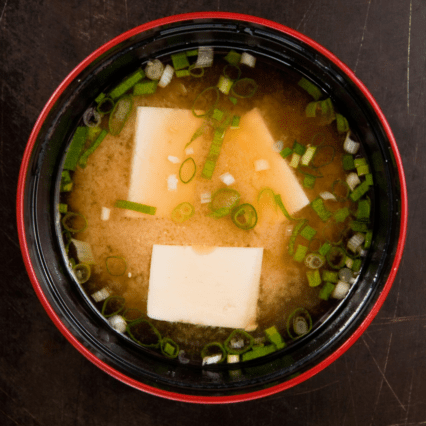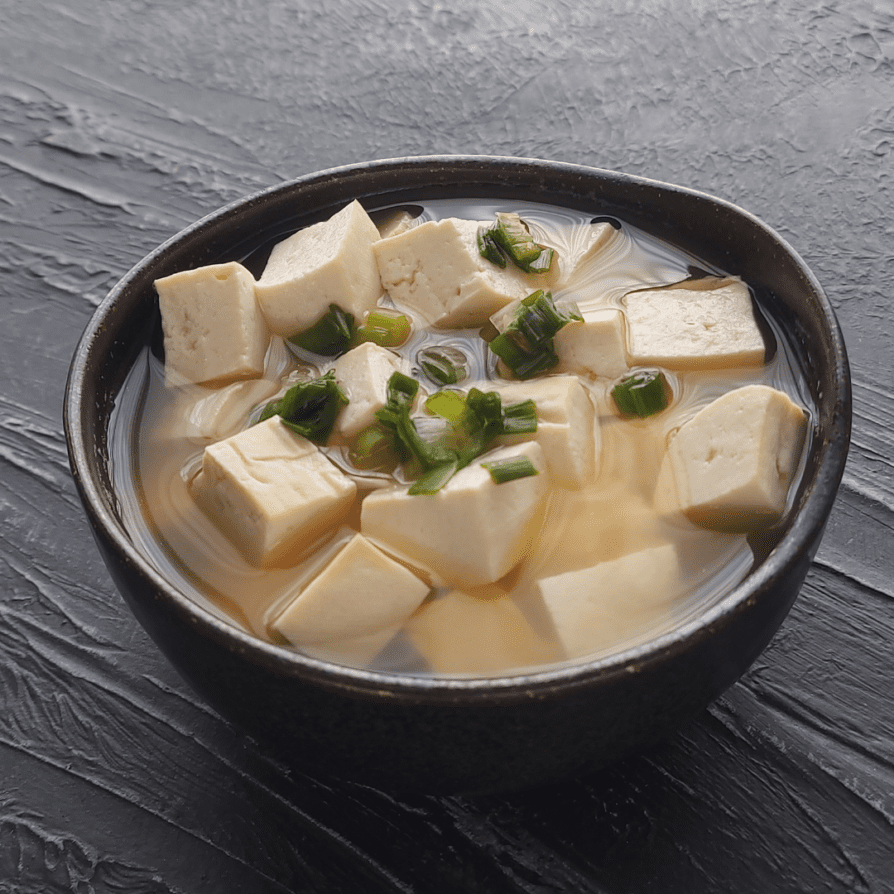The History of Miso & How to Make Miso Soup at Home

Miso is a fermented soybean paste and comes in many different varieties. It is made by fermenting soybeans with salt and koji (a type of fungus) and sometimes barley and rice. The mixture is aged for months or even years, resulting in a thick paste ranging from light yellow to deep brown depending on fermentation time and ingredients.
Like all fermented foods, it originated as a food preservation method before it’s full appeal was realized. The fermentation process has significant health benefits, especially for gut health and through extension, the overall health too.
As soybean crops increased throughout history, so did miso’s popularity. Now it’s ubiquitous in Japanese cooking.
In the West, miso is most commonly associated with miso soup, but it’s versatility extends beyond this dish. Miso is also used alongside other meat or vegetable broths for other soup varieties, as a pickling agent, or in dressings, sauces, and marinades.
The flavors of miso can vary significantly because there are so many types but, because of a shared baseline production process, they all bring some level of an umami-forward flavor profile
It also comes with the benefits of all fermented foods — essentially giving your microbiome a boost from your gut outwards — and contains a decent amount of protein, vitamins, and minerals. It is worth noting miso is high in sodium, although miso isn’t eaten in large quantities.
While miso can be used in so much beyond soup, miso soup is an easy, quick, and delicious food to make that we want to look at how anyone can make it at home with just a few ingredients and a super simple preparation. 
Making Your Own Homemade Miso Soup
Miso soup is such a warming, flavorful-yet-light soup and its simplicity means it’s much more approachable to make at home as opposed to more complex broths like the ultra-rich classic pork ramen broth that can take hours to make.
While it’s miso that’s highlighted in this soup, the base is still made of — like so much in Japanese cuisine — dashi.
While dashi is a broth and used as the base of many Japanese soups— it is also used as a base liquid in many other foods including, pan-fried foods like okonomiyaki and takoyaki.
Standard dashi at its most basic is flavored by konbu and katsuobushi (dried shaved skipjack tuna). However, there are several ways to simplify dashi, make it rich or create a vegetarian option. The latter could add mushrooms and take out the katsuobushi. Or, for a richer, more complex flavor, you could add in mushrooms and dried niboshi sardines and/or anchovies.
For our purposes, we’ll assume you’re making the basic dashi of konbu and katsuobushi.
There are three main options to do so, and even the most complicated is still simple. These options are the powder, the packet, or from scratch.
The dashi powder is the easiest method (although the packet is so easy to use too that it’s almost a toss-up). It consists of dried dashi granules that you simply add to warm water. It can produce the least flavorful dashi but will do in a pinch.
A dashi packet is essentially like a little tea bag which you let steep in mildly simmering water for just a few minutes — five minutes max. While this takes slightly more effort than the dashi powder, it will generally produce a fuller flavor.
Lastly, from scratch: There are multiple variations on this method, but in general you’ll start by soaking konbu in water for many hours — you can also lightly simmer it for a “hot brew” konbu dashi. From there, you’ll want to bring the water to a simmer and add the katsuobushi, but only for a few minutes, simmering it for longer causes less pleasant acrid flavors to come out. Some cooks suggest gently simmering the water, then turning off the heat before adding the katsuobushi and allowing it to steep for two to three minutes.
Once you have your dashi, you’ll need miso paste, silken tofu — and chopped green onion, plus any seaweed or other additions to taste.
When choosing miso for miso soup, shiro (white) miso is preferred due to its mild flavor and light color, but you can experiment with different types of miso to find the flavor that you prefer.
While the dashi is still hot, turn off the heat and whisk in your miso until it’s combined into the broth. We recommend dissolving your paste with some hot dashi broth before adding it to the dashi to help avoid large clumps.
The nice thing about miso soup is you can customize it with your favorite ingredients. While there are some standard ingredients, “miso soup” is a broad category rather than one strict recipe.
Once you have the miso dashi soup base, simply add additional ingredients to your liking. This might include green onions, tofu, and seaweed like thinly-sliced konbu or wakame, but you can also incorporate other greens, noodles, egg, onions, or any other ingredients you prefer!
That’s part of what makes miso soup such a great at-home meal: It’s simple and quick to make, it’s healthy, and while there are more traditional additions to it, you can really customize it however you wish. There are many uses for miso that go beyond soup, but miso soup is such an easy way to eat healthy and a healthy way to eat something easy to make — but most importantly, it’s delicious!




